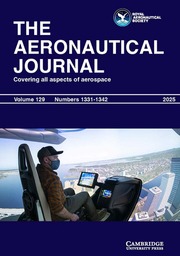Article contents
On innovation inaerodynamics
Published online by Cambridge University Press: 04 July 2016
Abstract
A discussion is presented of innovative change inaerodynamics, in which the transformation ofpractical transonic aerodynamics by computationalfluid dynamics is taken as a case study for thelessons to be learnt. The study focuses on thehistoric breakthroughs of Emmons and Murman and Colein the calculation of transonic flows, and on theexploitation of these at the Royal AircraftEstablishment to provide industry with a new, andhighly successful, tool for practical transonic wingdesign. It reaffirms the view that a firstprerequisite for innovation is the active presenceof individuals with clear vision and a spirit ofadventure. Further, innovative work will flourishonly if the climate is favourable, no matter howexceptional the individuals may be. The discussionconcludes with remarks on opportunities forinnovation in the treatment of Shockwaves, turbulentshear layers and complex practicalconfigurations.
Information
- Type
- Research Article
- Information
- Copyright
- Copyright © Royal Aeronautical Society 1996
References
- 1
- Cited by

